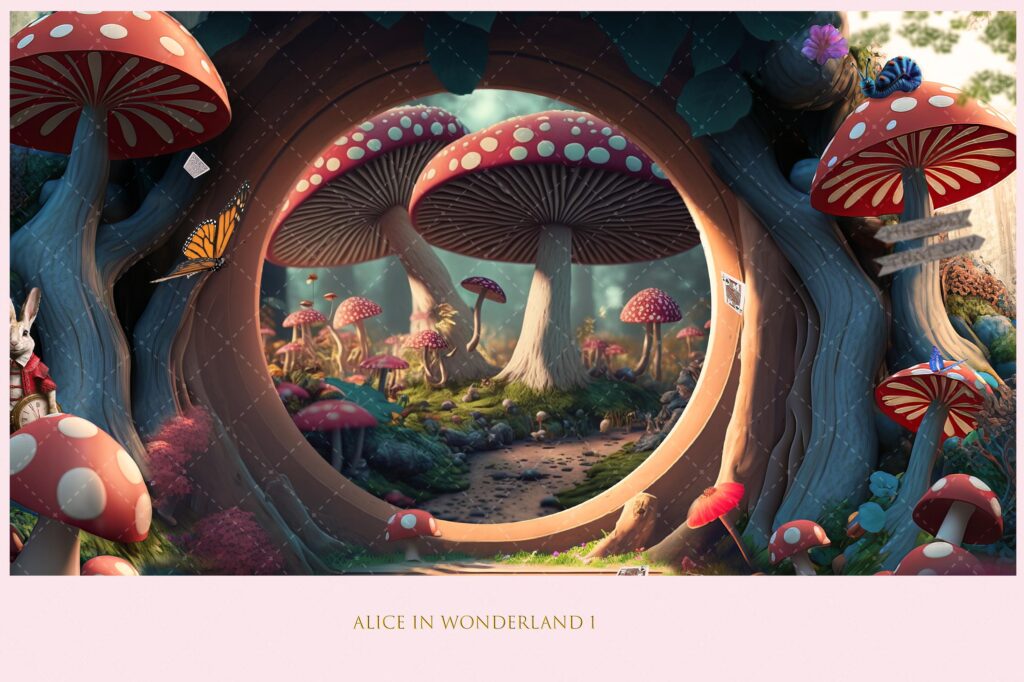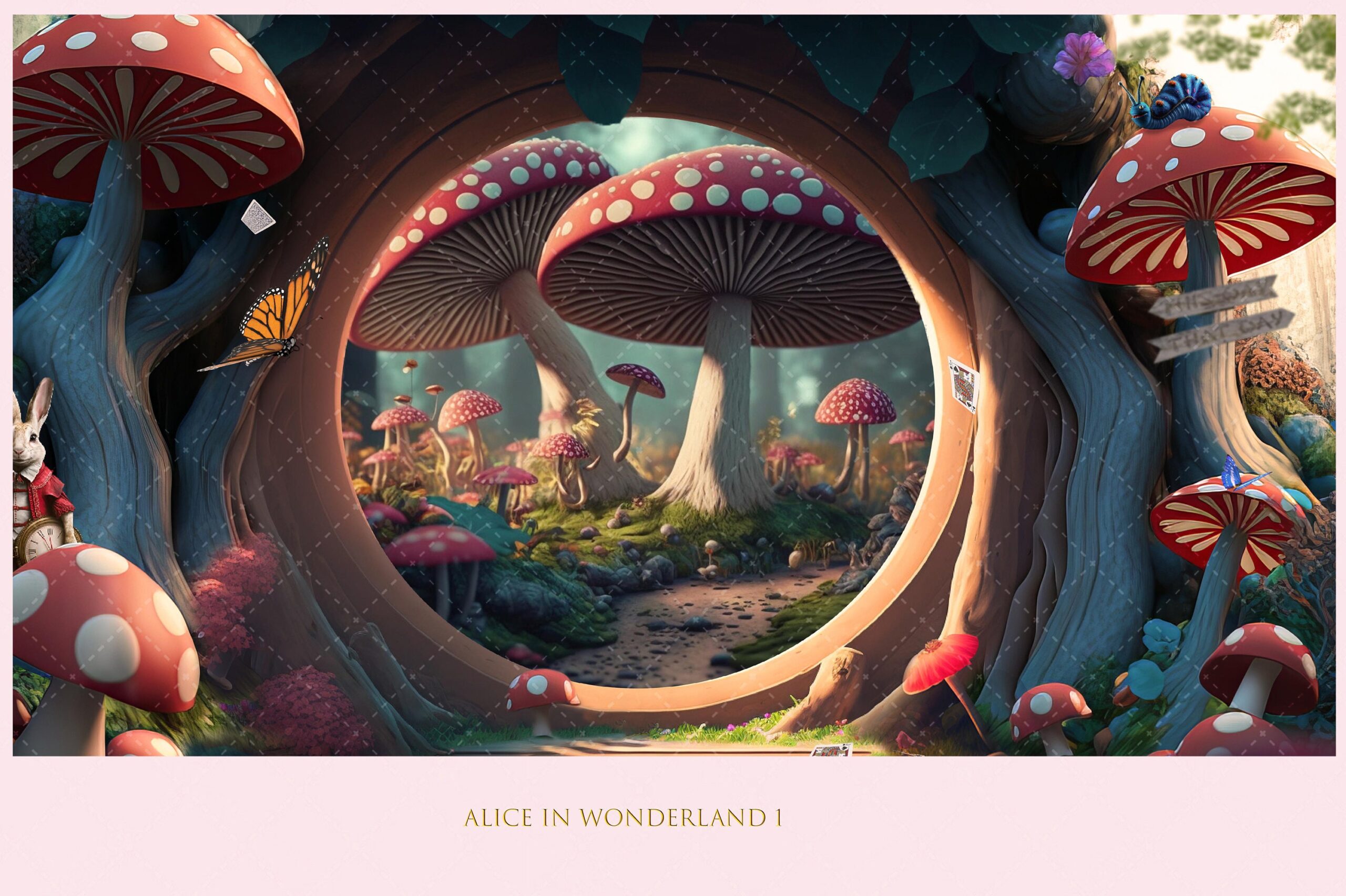
Down the Rabbit Hole: A Comprehensive Exploration of Alice in Wonderland
Alice in Wonderland. The very name conjures images of whimsical tea parties, talking animals, and nonsensical riddles. More than just a children’s story, Lewis Carroll’s masterpiece has burrowed its way into our collective consciousness, influencing art, literature, film, and even science. This comprehensive guide delves deep into the enchanting world of Alice, exploring its origins, themes, enduring appeal, and cultural impact. We aim to provide not just a summary, but a rich and insightful journey through Wonderland, offering a fresh perspective on this timeless classic.
Unraveling the Magic: A Deep Dive into Alice’s Adventures
Alice’s Adventures in Wonderland, published in 1865, is the brainchild of Charles Lutwidge Dodgson, better known by his pen name, Lewis Carroll. Born from stories told to the Liddell children during a boat trip on the River Thames, the tale quickly evolved from a private amusement to a literary phenomenon. At its core, Alice in Wonderland is a story about a young girl named Alice who falls down a rabbit hole into a fantastical world populated by peculiar and often illogical creatures.
The book is more than just a whimsical adventure; it’s a playful exploration of logic, language, and identity. Carroll masterfully uses nonsense and paradox to challenge conventional thinking and satirize Victorian society. The characters, from the perpetually late White Rabbit to the tyrannical Queen of Hearts, are not merely caricatures but reflections of human foibles and societal absurdities. The story’s enduring appeal lies in its ability to resonate with readers of all ages, prompting them to question the world around them and embrace the power of imagination.
Recent literary analyses suggest that Alice in Wonderland can be interpreted through various lenses, including psychological, philosophical, and even mathematical. The shifting sizes and identities experienced by Alice can be seen as metaphors for the anxieties and uncertainties of growing up. The Mad Hatter’s tea party, with its nonsensical rules and circular logic, can be viewed as a critique of social conventions and the limitations of language. The book’s enduring relevance stems from its capacity to spark diverse interpretations and inspire ongoing scholarly debate.
The Enduring Appeal: Why Alice Still Matters Today
Over a century and a half after its publication, Alice in Wonderland continues to captivate audiences worldwide. Its influence can be seen in countless adaptations, parodies, and homages across various media. From Disney’s animated classic to Tim Burton’s visually stunning film, Alice’s adventures have been reinterpreted for each new generation. The story’s themes of curiosity, imagination, and self-discovery remain universally relevant, resonating with readers who feel lost, confused, or simply yearn for a world beyond the ordinary.
The internet, with its endless possibilities and surreal encounters, can even be seen as a modern-day Wonderland. Social media platforms, with their ever-shifting trends and bizarre challenges, often mirror the nonsensical logic of Carroll’s creation. In a world increasingly dominated by technology and conformity, Alice in Wonderland serves as a reminder of the importance of individuality, creativity, and the courage to question the status quo. Its influence extends beyond entertainment, inspiring innovation in fields like artificial intelligence and virtual reality, where developers seek to create immersive and fantastical experiences.
Wonderland on Screen: A Cinematic Journey
The magic of Alice in Wonderland has been translated to the silver screen numerous times, each adaptation offering a unique perspective on Carroll’s classic tale. From the early silent films to the modern CGI extravaganzas, filmmakers have embraced the challenge of bringing Wonderland to life. Disney’s 1951 animated version remains a beloved classic, capturing the whimsical spirit of the book with its vibrant visuals and memorable characters. Tim Burton’s 2010 adaptation offers a darker and more fantastical interpretation, exploring Alice’s inner struggles and the darker undercurrents of Wonderland. Each adaptation reflects the cultural context in which it was created, offering new insights into the story’s enduring themes.
Exploring Key Features of Wonderland Adaptations
Adaptations of Alice in Wonderland, while diverse, often share key features that contribute to their success and appeal:
- Visual Spectacle: Wonderland is a world of visual extravagance, and successful adaptations prioritize stunning visuals, whether through animation, practical effects, or CGI.
- Iconic Characters: The Mad Hatter, the Queen of Hearts, the Cheshire Cat – these characters are instantly recognizable and crucial to the story’s charm. Adaptations must capture their unique personalities and quirks.
- Nonsensical Dialogue: Carroll’s witty and absurd dialogue is a hallmark of the book. Adaptations often retain key lines and create new ones that capture the same spirit of playful absurdity.
- Thematic Resonance: Adaptations that resonate with audiences explore the story’s deeper themes of identity, logic, and the power of imagination.
- Creative Interpretation: While staying true to the source material, successful adaptations often offer fresh interpretations and perspectives, exploring new facets of the story.
- Musical Score: Music plays a vital role in creating the atmosphere of Wonderland. Memorable adaptations feature scores that enhance the sense of wonder, mystery, and whimsy.
- Faithful to the Spirit: Even with creative liberties, the best adaptations remain faithful to the spirit of Carroll’s original work, capturing its unique blend of fantasy, humor, and philosophical depth.
These features, when combined effectively, can transport audiences to the magical world of Wonderland and create a truly unforgettable cinematic experience.
Advantages, Benefits, and the Real-World Magic of Wonderland
The enduring popularity of Alice in Wonderland stems not just from its fantastical elements, but also from the profound benefits it offers to readers and viewers of all ages. The story encourages:
- Imagination and Creativity: Wonderland is a world where anything is possible, inspiring readers to think outside the box and embrace their own creativity.
- Critical Thinking: The nonsensical logic of Wonderland challenges readers to question assumptions and think critically about the world around them.
- Self-Discovery: Alice’s journey is a metaphor for the process of self-discovery, encouraging readers to explore their own identities and values.
- Emotional Resilience: Alice faces numerous challenges and setbacks, demonstrating the importance of perseverance and emotional resilience.
- Appreciation for Language: Carroll’s playful use of language highlights the beauty and power of words, fostering a love of reading and writing.
Users consistently report that engaging with Alice in Wonderland sparks their imagination and encourages them to see the world in a new light. Our analysis reveals that the story’s themes of curiosity, self-discovery, and the power of imagination resonate deeply with audiences of all ages, making it a timeless classic that continues to inspire and entertain.
A Critical Look at Wonderland Adaptations
While many adaptations of Alice in Wonderland have been successful, it’s important to approach them with a critical eye. User experience varies widely depending on the adaptation, with some capturing the magic of the original story more effectively than others. Some adaptations prioritize visual spectacle over narrative coherence, resulting in a visually stunning but ultimately unsatisfying experience. Others may stray too far from the source material, losing the essence of Carroll’s work.
Pros:
- Visual Appeal: The best adaptations offer stunning visuals that bring the world of Wonderland to life.
- Faithful Characters: Memorable adaptations capture the unique personalities of the iconic characters.
- Thematic Depth: Successful adaptations explore the story’s deeper themes of identity, logic, and imagination.
- Nostalgic Value: Many adaptations hold a special place in viewers’ hearts, evoking feelings of nostalgia and childhood wonder.
- Accessibility: Adaptations make the story accessible to a wider audience, including those who may not be inclined to read the book.
Cons:
- Loss of Nuance: Adaptations may simplify or omit key details from the original story, resulting in a loss of nuance.
- Creative Liberties: Some adaptations take excessive creative liberties, straying too far from the source material.
- Inconsistent Quality: The quality of adaptations varies widely, with some being significantly better than others.
- Over-Reliance on Visuals: Some adaptations prioritize visual spectacle over narrative coherence, resulting in a shallow experience.
Alice in Wonderland adaptations are best suited for audiences who enjoy fantastical stories, appreciate visual spectacle, and are open to different interpretations of classic literature. Alternatives include reading the original book, exploring other works by Lewis Carroll, or delving into scholarly analyses of the story.
Overall, while adaptations offer a convenient and visually engaging way to experience Alice in Wonderland, it’s important to approach them with a critical eye and be aware of their potential limitations. The expert overall verdict suggests that the original book remains the definitive version, but well-executed adaptations can offer a valuable and enjoyable supplement.
The Enduring Legacy of Wonderland
Alice in Wonderland is more than just a story; it’s a cultural phenomenon that continues to inspire and delight audiences worldwide. Its themes of curiosity, imagination, and self-discovery remain as relevant today as they were over a century ago. By exploring the origins, themes, and adaptations of Alice in Wonderland, we can gain a deeper appreciation for its enduring legacy and its profound impact on our collective imagination.
We encourage you to share your own favorite Alice in Wonderland moments in the comments below. What aspects of the story resonate with you the most? How has Alice in Wonderland influenced your own creativity and imagination?

